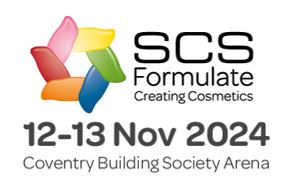Seminar
Rheological Principles to Predict Sensorial Properties of Topical and Hair Formulations
Time: 10:00 - 10:30
Date: Thursday 5 September
Synopsis
The sensorial properties of skin and hair care products play a key role on consumer’s acceptability of the products. In a previous work [1] we have set design principles for hand sanitiser formulations relating rheological properties and hand feel experience: low runoff, spreadability, smoothness and non-stickiness. In this work we investigate the rheological properties of different topical and hair care formulations and access if the same design principles can be applied to those formulations.
Shear and extensional rheological measurements were performed on different topical and hair commercial products. Rheological experiments are informative of the deformation and flow behaviour of the material and how it responds to different applied stresses. Shear rheology tells us about the viscoelastic properties of the material when subjected to shear deformations, whereas extensional rheology can show us the material’s response when stretched/extended. Both type of flows can be generated while applying topical and hair care formulations. Steady shear rheology was measured using a Kinexus Ultra+ (NETZSCH), using a 40 mm smooth and/or sandblasted cone-plate 1° geometry, and a 40 mm Crosshatch plate-plate geometry. When possible, the extensional properties of the formulations were obtained using a Capillary Breakup Extensional Rheometer (ThermoFisher) using 6 mm plates.
Results show that not all the topical and hair formulations tested follow all the four design principles proposed in our previous work, which for some products could be expected based on their formulation’s composition. Most of the formulations that passed the smoothness criteria, that is satisfied if the formulation has a measurable First Normal Stress Difference at high shear rates [1], have polymers in their composition. The rheology and sensorial performance of topical formulations can be improved by changing or adjusting the formulation ingredients properties, such as the polymer’s molecular weight and concentration; colloids and particle’s size and concentration; adapting solvent’s composition; and others. A better understanding of the rheological behaviour of formulations and how each ingredient contributes to the final rheological properties of the formulation is key to comprehend product’s behaviour as well as to identify what needs to be modified to achieve enhanced sensorial perception.
[1] Silva, A.F., Wood, T.A., Hodgson, D.J.M. et al. Rheological design of thickened alcohol-based hand rubs. Rheol Acta 61, 571–581 (2022)
Speakers
 Dr Andreia Fonseca Da Silva University of Edinburgh
Dr Andreia Fonseca Da Silva University of Edinburgh
« Back




